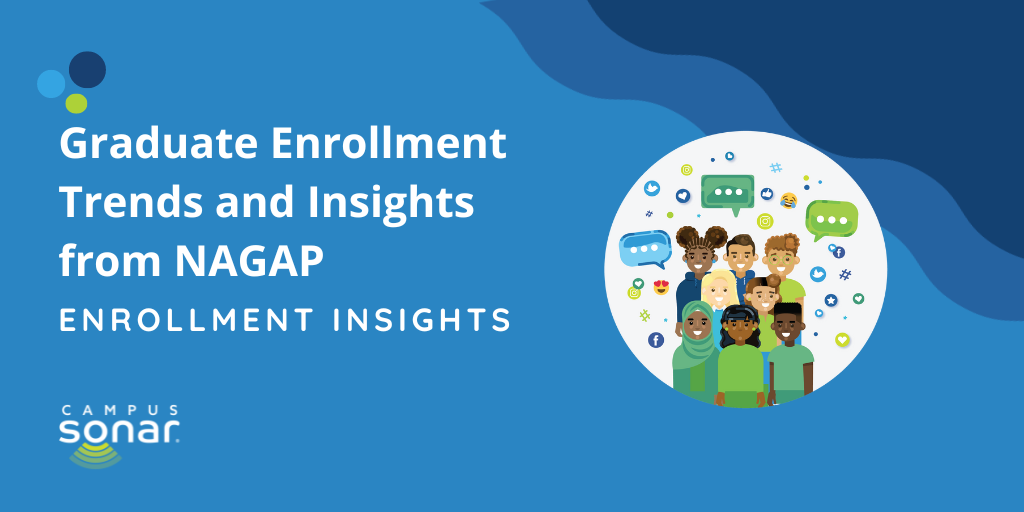Graduate Enrollment Trends and Insights from NAGAP

The topic of graduate enrollment growth is having a moment in higher ed. With the FAFSA delays and decreasing undergraduate enrollment, expanding graduate programs feels like a quick and easy solution for many campuses.
But from recent work with a client on graduate program growth, we know it’s not as easy as it seems. Our research determined it’s critical for graduate programs to align student and employer needs in today’s evolving job market. Prospective graduate students and employers expect the same outcomes—hands-on learning, applied skill development, relationship-building, and critical thinking—that span disciplines and support a professional, interpersonal work environment.
These findings aligned with the top themes we saw at the NAGAP Graduate Enrollment Management Summit—budgets, resources, SEO, and how students search. Strategist Loren Bass shared some key conference takeaways.
Market research helps you understand graduate students’ needs of cost and convenience.
Preliminary results from Carnegie’s annual prospective grad student survey shared multiple insights into prospective graduate students' search process.
Primary sources of information gathering:
- Graduate school websites (83%)
- Online search (68%)
- Information sessions (40%)
- Direct communication (32%)
- Graduate fairs (31%)
- Social media (28%)
Top three topics students research:
- Cost, scholarship, financial aid, funding (78%)
- General information about their program of interest (71%)
- Specific details and timeline about their program of interest (70%)
Only 58% search for information about specific institutions, indicating that cost and convenience are essential—graduate students aren’t looking for the best program, they’re looking for the program that meets their cost and convenience needs.
How students search on social media:
The top platforms were LinkedIn (32%), Instagram (32%), YouTube (29%), and Reddit (20%), with 23% reporting they didn’t use any social media in their search. Graduate students use social media differently than undergraduates when searching for colleges, a difference that demonstrates the importance of tailoring your strategy to the platforms your audience uses.
Social intelligence supports you in differentiating your campus.
With a rush to expand graduate programs, the market is crowded. Campuses need SEO support and analysis to stand out. Social intelligence research is key to this campus need—it allows you to quickly gain the real-time audience understanding and insights that fuel SEO and content marketing so you can deliver powerful, relevant content.
The increased competition and demographic shifts highlight the need to differentiate and focus on your audience and capabilities. Graduate schools need to be better about collaborating across campus to align on brand messaging. Incorporating qualitative and quantitative data to make informed decisions allows you to build the strategic framework that aligns everyone across campus on brand strategy, determines budget, and informs ROI reporting.
Use social intelligence to navigate challenges.
Our social intelligence research surfaced three key issues and opportunities for graduate enrollment growth. Online conversation research provides industry context and highlights actionable ways to focus your strategy and impact key graduate enrollment outcomes.

